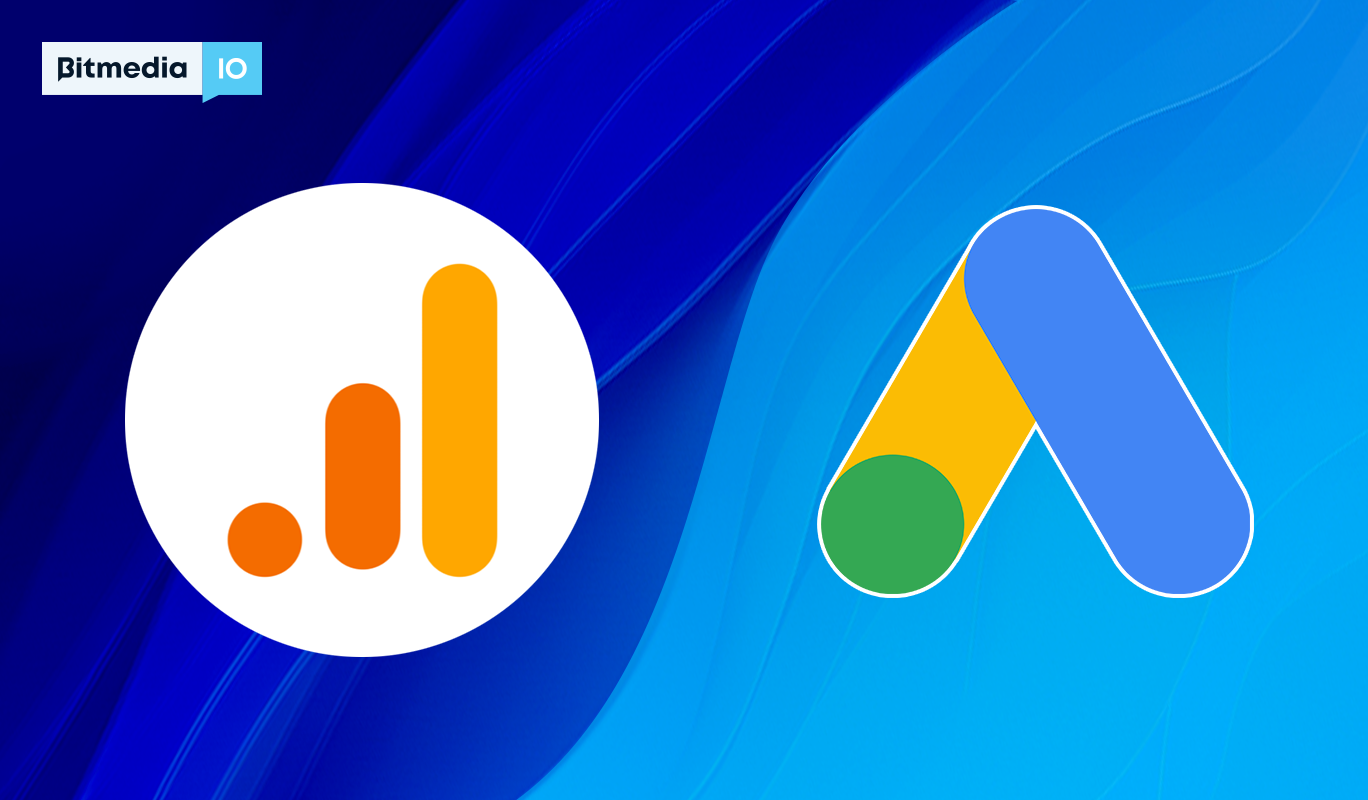Google Ads vs. Analytics Data Differences

Data on Google Ads reports and Google Analytics should be the same. However, there are circumstances where both reports may differ despite evaluating the same metrics.
If you have noticed these differences, this article aims to break down the reason behind those discrepancies and how you can evaluate the complete picture of your Organic Search Data. Sometimes this can appear as a crucial question before a board when presenting your website or channel’s metrics.
The important thing is to understand how Google represents its metrics and why some data may appear as it is. In this article, we are going to evaluate all that and unreal Google Ads vs. Analytics Data differences. If you want to team up with a specialized marketing agency in the blockchain industry, Bitmedia.IO is a good place to start. The agency helps cryptocurrency companies and blockchain startups to become more visible by personalizing their ad campaigns, helping them better understand these campaigns and also enabling them to make better marketing decisions whenever they see their crypto metrics.
Well, let’s dive into the configurations checklist that ensures your campaigns have the right preferences for a clear data representation.
Configuration Checklist
Linking Accounts
The metrics report is usually sophisticated whenever web managers link multiple Google Ads accounts. To avoid this, ensure that every account in your Google Analytics and Google Ads is appropriately linked.
Landing Page Tracking
Check whether both the Ads and Analytics are tracking similar landing pages to ensure correct tagging.
Auto Tagging
Activate auto-tagging on your Google Ads account so as to enable automated appending of your ad campaigns to the appropriate destination URLs. This ensures accurate tracking of data and campaign metrics.
Final URL Tagging
Help prevent data discrepancies in your Ads and Analytics accounts by manually tagging your final URLs to ensure consistent tracking parameters.
Filter Scrutiny
Make sure you have reviewed and compared any views or filters on your Analytics that could be affecting your data. This will help campaign managers have a better understanding of various data touchpoints such as views, user engagement, clicks and so on.
Tagging Validation
Check the accuracy of your tracking tags and see to it that the tags are well-implemented.
Reasons for Discrepancies
Once you’ve verified that your setup is correct, it’s essential to understand the underlying reasons for discrepancies in your data:
- Conversion Attribution
Both Google Ads and Analytics attribute conversions differently, especially when the conversion involves multiple touch-points. Understanding these differences is crucial to understanding the reason why there is a discrepancy in your Google Analytics Vs Ads data.
- Transaction Timing
Variations in the timing of conversions can lead to differences in reported data between the two platforms.
- Tracking Lag
Google Ads and Analytics may have different reporting update frequencies, resulting in temporary data discrepancies.
- Account-Level Tracking
Ensure that tracking settings are consistent at the account level to avoid discrepancies between campaigns.
Clicks vs. Sessions – What are the Differences
Recognize the distinction between Google Ads’ click data and Analytics’ session data. In this section, we evaluate the clicks-sessions discrepancy and why it matters when interpreting crypto campaign metrics
Understanding the fundamental differences between clicks and sessions can help in reconciling data. But how?
- Metrics Matter: Understanding what data and metrics are under your analytics is vital so as to understand why they may have certain discrepancies when data reporting. For example, Google Ads records clicks, while Analytics records sessions.
- Invalid Clicks Filtering: Google Ads thoroughly filters invalid clicks. On the other hand, the Google Analytics metric tracker does not filter invalid clicks. This can therefore result in huge discrepancies between the clicks and the sessions.
- Auto-Tagging Importance: Tracking parameters are more consistent if you enable auto-tagging in your Google Ads account. This makes sure that the tracking parameters are not only accurate but also consistent.
- Import Settings: Ensure that data import settings in Analytics are correctly configured to avoid discrepancies.
- URL Rewrite and Redirects: Be on the lookout for URL rewrites or redirects that might impact tracking, particularly when tracking relies on URL parameters.
- Landing Page Tracking: Consistent tracking of landing pages is essential, as discrepancies may arise from differences in how landing pages are tagged.
- User Preferences: Differences in user settings or preferences, such as ad blockers or JavaScript settings, can affect data reporting in Analytics.
- Server Delays: Server response times can influence the accuracy of tracking data, especially in Analytics.
- Returning Users and Bookmarks: Consider how returning users and bookmarked visits are tracked in Analytics compared to Google Ads.
Discrepancies in the Conversion Rate
Conversion rate discrepancies between Google Ads and Google Analytics can be a source of frustration for digital marketers. While both platforms aim to provide insights into the performance of online advertising campaigns, differences in reported conversion rates are not uncommon.
Attribution Models
One of the primary reasons for differences in conversion rates between Google Ads and Analytics is the use of different attribution models.
Google Ads typically uses a “Last Click” attribution model, where the credit for a conversion is assigned to the last ad clicked before the conversion event. This model emphasizes the final touchpoint and may not give credit to other interactions that contributed to the conversion.
In contrast, Google Analytics provides various attribution models, including “Last Interaction,” “First Interaction,” “Linear,” “Time Decay,” and “Position-Based.” These models distribute credit for conversions across multiple touchpoints, providing a more comprehensive view of the customer journey.
Tracking Mismatches for Ctypto Marketing Campaigns
Tracking discrepancies can also lead to differences in conversion rates and can result from various issues:
- Cross-Domain Tracking: If your website spans multiple domains, ensuring accurate cross-domain tracking is crucial. Inconsistent tracking implementation can lead to missed or double-counted conversions.
- JavaScript and Cookie Handling: Differences in how browsers handle JavaScript and cookies can affect tracking. Users with disabled JavaScript or cookie restrictions may not be accurately tracked in Analytics.
- Redirects and Server Delays: URL redirects and server response times can impact the tracking process, leading to variations in reported conversions.
- Filter and View Settings: Filters and view settings in Google Analytics can influence which data is included in reports. Ensure that filters are correctly configured to match your reporting requirements.
- Goal and Event Configuration: Misconfigurations of goals and events in Google Analytics can result in inaccurate tracking of conversions.
Data Sampling
Google Analytics often samples data, especially in high-traffic accounts. This means that only a subset of data is used for reporting, which can introduce discrepancies, particularly in smaller sample sizes.
Platform-Specific Behavior
Both Google Ads and Analytics may have platform-specific behaviours. For example, Google Ads may filter out invalid clicks, which could affect the number of conversions reported.
Data Update Frequency
Google Ads and Analytics may update data at different frequencies. These discrepancies can lead to temporary variations in reported conversion rates. It is quite important to utilize real-time data when evaluating the differences.
Reconciliation and Action
Here are a few steps to effectively manage differences in conversion rates:
Choose a Common Attribution Model
Ensure that both Google Ads and Google Analytics use the same attribution model for conversion tracking to ascertain that the metrics only represent reliable data. This helps align the methodology used for assigning credit to conversions.
Regularly Audit Tracking Setup
Regularly review and validate your tracking setup to identify and rectify discrepancies stemming from issues like cross-domain tracking, JavaScript handling, and redirects.
Compare Apples to Apples when evaluating your crypto metrics
When analyzing data from both platforms, make sure you are comparing similar data sets. For example, compare data for the same attribution model and time period.
Understand Platform and Alternative Tools Differences
Be aware of the unique features and behaviours of Google Ads and Analytics, such as the filtering of invalid clicks, and consider these when interpreting data.
Consult Support Resources
Google provides comprehensive support resources for both Google Ads and Analytics.
Conclusion
Resolving Google Ads vs. Analytics data inconsistencies requires a meticulous approach. The approach begins with ensuring that your accounts are correctly linked, tracking parameters are accurately set, and filters are scrutinized.
If looking for help or digital marketing resources, Bitmedia.IO is a good place to start. Bitmedia is an advertising agency that promotes various types of projects including cryptocurrency, gaming and DeFi platforms. The advertising agency specializes in a wide range of marketing solutions including
- display (banner) ads,
- content marketing,
- influencer collaborations,
- direct banner placement,
- button ads,
- email marketing campaigns,
- press release distribution.
The team can also help break down your Google Ads Vs Analytics data. One unique thing about Bitmedia is they know where crypto enthusiasts and potential gamers are. Relying on their advertising solutions will not only help execute game-changing marketing strategies but also help launch successful crypto advertising campaigns.


